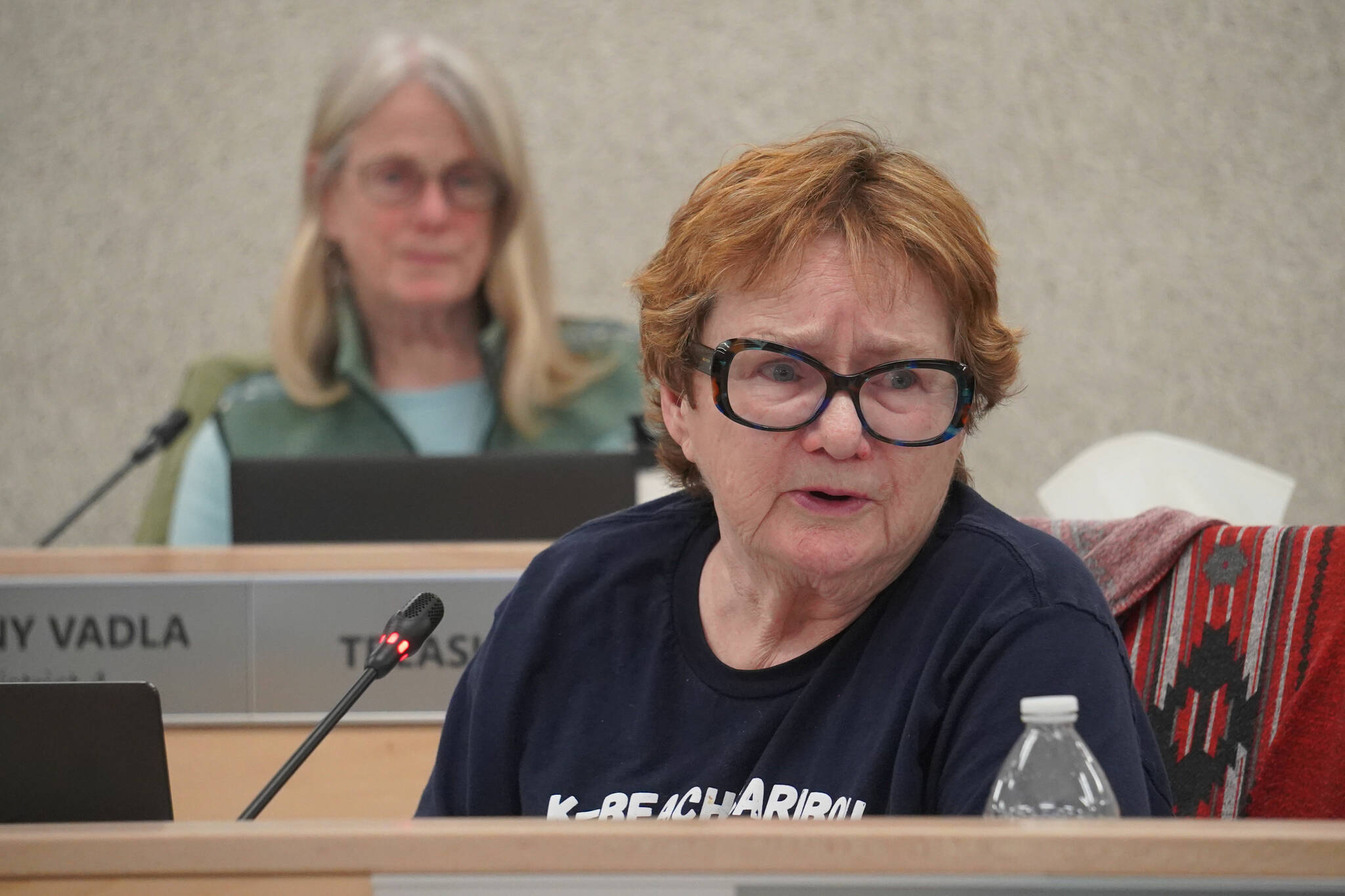Nikolaevsk School is set for closure at the end of June after unanimous vote of the Kenai Peninsula Borough School District’s Board of Education on Monday.
That result followed months of conversations about closing district schools this year. Nikolaevsk was included among a list of nine possible closures in February, as the district has grappled this year with a $17 million deficit and flat school funding from the state. The district last month hosted a meeting in the community where they told families and staff that they needed to bring more students in to Nikolaevsk School to prevent its closure.
On Monday, though each member of the board voted in favor of the closure, none responded when board president Zen Kelly asked for a motion to enact the move. Nearly 15 seconds passed in silence before member Patti Truesdell said “nobody wants to do it.”
Ultimately, Kelly made the motion himself.
“I will move to approve the superintendent to implement the permanent closure of Nikolaevsk School, effective June 30, 2025,” he said.
Per the text of the action, read by Kelly during the meeting, KPBSD Superintendent Clayton Holland will be tasked with implementing “a transition plan” for Nikolaevsk’s students to “appropriate receiving schools,” supporting families, reassigning staff and coordinating with borough staff to determine future use and repurposing of the vacated school building.
“They’re very tough decisions to make,” Kelly said. “We constantly have to look out for the greatest good for the greatest number. That is what we’re moving forward with today.”
Per meeting documents, there are 21 students enrolled at Nikolaevsk, which has a capacity of 175. A closure scenario presentation to the board earlier this year says that those students would instead go to Chapman School or Homer High School, resulting in one-way trip times approaching an hour and a half. With the return trip, students may spend nearly three hours traveling to or from school each day.
The board was told during a Monday work session that a school bus would be available to get students to their new school — with one bus stop located 2 miles from Nikolaevsk School and a maximum of 4 miles from Nikolaevsk residences.
The closure is expected to save the district around $476,000 in the coming school year — without calculating new costs from bussing. Those savings decline over five years as the district loses revenue to a school size factor that gave them more money for operating a small school. By the fifth year, the district is only saving around $283,000 per year.
When Nikolaevsk was first mentioned as a candidate for closure, dozens came out to testify on the school’s behalf at a meeting of the board in Homer. There were 50 people at the community meeting in April. On Monday, only one person spoke for the school, parent Lisa James. She said that she was sad for her community, but that she’d been in touch with the borough government to start discussing using the building for a community center or charter school.
Nikolaevsk Principal Diane Maples had called into a special meeting of the board on April 23, where she said she appreciated the district giving them time to “see what was possible,” but conceding that the school hadn’t managed to garner a wave of new enrollments great enough to reverse their fortune. She was named as the new principal teacher of Susan B. English School in Seldovia on April 30.
Truesdell said she hoped Nikolaevsk families could open their own charter school — “we know our governor is very much in support of our charter schools.”
Virginia Morgan, another member of the board, said her life was “shaped by small schools and small communities.” She said she didn’t see “any other options right now with the budget that we’re dealing with.”
Board Vice President Jason Tauriainen said Nikolaevsk’s closure was the first of several difficult decisions to come as the district grapples with stagnant funding. The Alaska Legislature last month approved a bill that would include a $700 increase in per-student funding. The district has repeatedly said that state funding that kept pace with inflation would be $1,808 more than the current total.
“We had hoped that there would be more help from the state,” he said. “We got some help, but not quite what we needed.”
A full recording of the meeting will be available at the KPBSD BoardDocs website.

